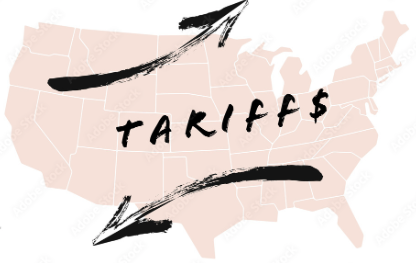
Market Intel
Per Imported Ingredient: Tariffed? Tweaked? Exempted?
Foreign feed ingredient exporters and U.S. importers are struggling with pricing as they tighten margins and swallow new tariff costs. Near term, some vendors are dropping prices in order stay in the game.

But the tariff playing field is bumpy and confusing — especially for micro ingredients sourced from China. One upside effect — ocean container freight rates are coming down.
Amino acids: New tariff rates do not apply to lysine and threonine — aka “tariff exempt” — but they do apply to tryptophan. Market Intel sources note significantly lower lysine prices for Q3 offers, while at least one shipment from China reportedly was rejected for off-spec quality. DL methionine prices are steady but the hydroxy analog supply remains tight with deliveries under allocation for the rest of 2025.
Vitamins: Another uneven China tariff field where vitamins A and E are tariff exempt (with prices steady to lower) and vitamin D3 and the B vitamins non-exempt (with prices steady to higher).
Trace minerals: By and large, tariff exempt. Last month’s sharp price rise for copper sulfate has abated given general uncertainty over industrial growth. Zinc sulfate prices remain steady.
Palm & bypass fat products: Come June, tariffs are scheduled to impact palm product imports from Indonesia and Malaysia. However, as yet, Q3 palm pricing is lower than Q2. Calcium salts continue their price rise based on demand for palm-Ca salt blends. Overall, supplies of bypass fats are becoming more available, which should continue into summer.
Soybean meal: SBM board prices are steady-to-higher while the basis is steady-to-lower. In the eastern corn belt, it looks like more corn, less beans in the ground. However, sizable harvests in Brazil and Argentina are keeping a lid on meal prices. No surprises near term for soy products pricing.
Canola meal: The basis is up slightly with some tightness of inventory. If there is a Canada tariff pricing effect, it’s muted.
P & K: Supplies of phosphates, potassium chloride (KCl), and magnesium oxide (MgO) appear to be adequate and prices remain steady. “Still quiet,” Market Intel sources say.
Urea: Prices jumped again in late April, attributed to some shortages on the ag side. On the feed side, there’s no problem with quality. Reassuring developments — a couple more shipping companies are moving urea out of the Black Sea while attacks on shipping in the Red Sea appear to be under greater control.
Blood meal: Prices are coming down steadily in the seasonal pattern but set to rise again in summer. However, there are uncertainties over reciprocal tariff effects — less U.S. pork and beef exported to China.
Distillers: DDGS prices are up, which Market Intel sources attribute to seasonal ethanol processing shut downs. Rule of thumb: DDGS pricing runs about 85% of cash value of corn.
Wheat midds: Prices are lower even with soy processors in the midst of spring shutdowns.
Soy hulls: Prices are steady with adequate supply-to-demand, but likely to be lower in the months ahead.
Over the horizon… Tariff-induced supply chain adjustments will not echo the pandemic disruptions five years ago. Nonetheless, West Coast ports already see fewer container vessels coming in from Asia….
On deck: May WASDE Report.
Questions?
Email FeedInsight 4Dairy

